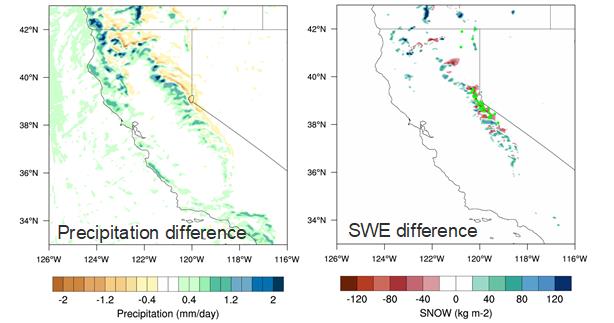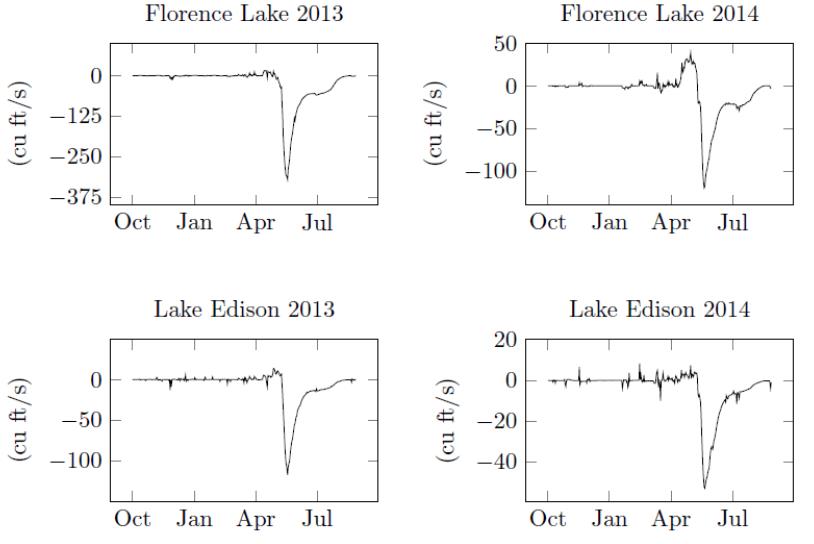-
Water Energy Climate Nexus
Impact of Aerosol on Precipitation and Snow Water Equivalent
Aerosols warm the California mountain tops through aerosol-snow interaction by local dust but cools the lower elevation areas through aerosol-radiation interaction and aerosol-cloud interaction by transported and local anthropogenic aerosols.
Aerosols reduce precipitation and snowpack in California primarily through aerosol-cloud interaction by transported and local anthropogenic aerosols and aerosol-snow interaction by local dust.
Aerosols cause earlier snowmelt at mountain tops through aerosol-snow interaction by local dust, leading to reduced surface runoff after April.

Impact of Aerosol on Inflows
The presence of aerosols results in significant reduction of annual reservoir inflows by 4% - 14% in California.
In the summer, aerosols reduce precipitation, snow water equivalent, and snowmelt which leads to a reduction in inflow by 11%-26%.

Publications
[J16] Farzana Kabir, Nanpeng Yu, Weixin Yao, Longtao Wu, and Jonathan Jiang, "Impact of Aerosol on Reservoir Inflows: A Case Study for Big Creek Hydroelectric System in California," in press, Hydrological Processes, 2018.
[J15] Longtao Wu, Yu Gu, Jonathan Jiang, Hui Su, and Nanpeng Yu, "Impacts of Aerosol on Seasonal Precipitation and Snowpack in California Based on Convective-resolving WRF-Chem Simulations," Atmospheric Chemistry and Physics, vol. 18, pp. 5529-5547, 2018.
[J12] Longtao Wu, Hui Su, Olga Kalashnikova, Jonathan Jiang, Chun Zhao, Michael Garay, James Campbell, and Nanpeng Yu, "WRF-Chem Simulation of Aerosol Seasonal Variability in the San Joaquin Valley," Atmospheric Chemistry and Physics, vol. 17, pp. 7291-7309, 2017.
[C27] Farzana Kabir, Nanpeng Yu, Balakrishna Sastry, and Vibhu Kaushik, " Impacts of Aerosols on Hydropower Generation: A Case Study for Big Creek Hydroelectric System in California," submitted to IEEE Power and Energy Society Grand International Conference and Exposition Asia, 2019.